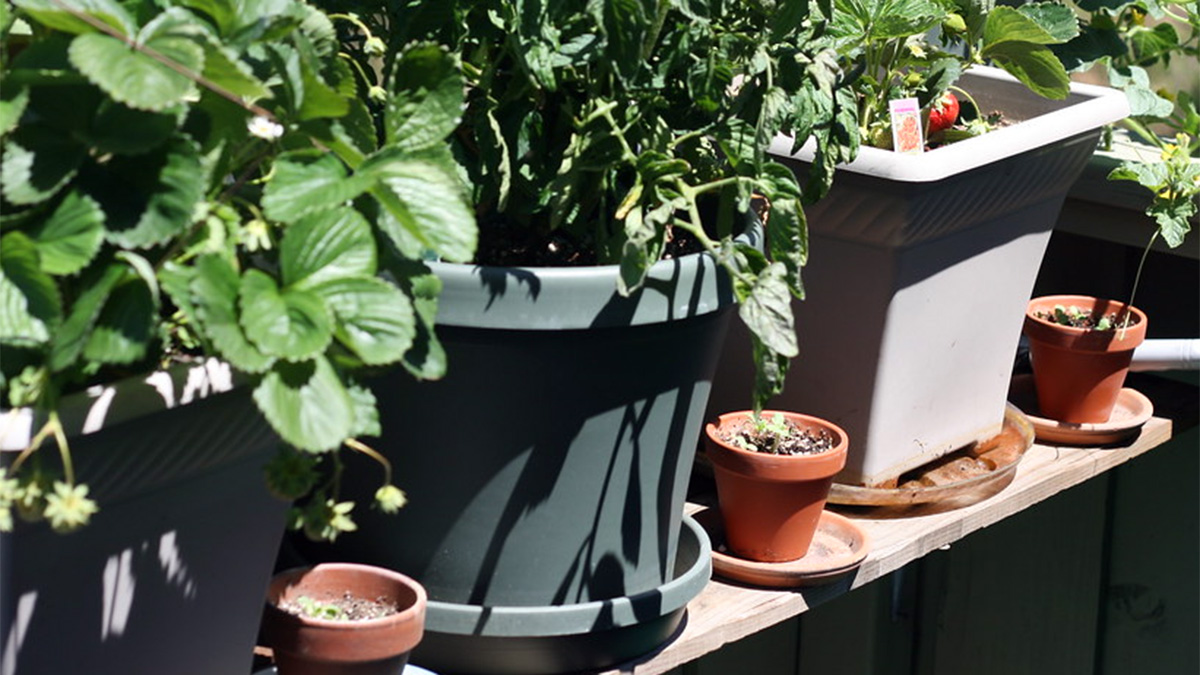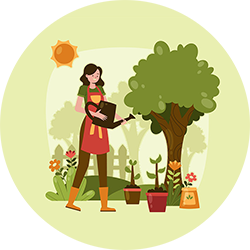Simple and Effective Container Garden Tips for Beginners

Container gardening is a great way to start growing your own herbs, veggies, and flowers—no backyard required. Whether you have a sunny balcony, a small patio, or even just a windowsill, containers offer a flexible, low-commitment way to dip your toes into gardening. With the right setup and a few beginner-friendly tips, you’ll be harvesting in no time.
Choose the right containers

Choosing the right container is one of the most important decisions in starting a container garden. Your plant needs enough room for its roots to grow, so match the pot size to the mature size of the plant. Larger containers are better for vegetables and flowers that need consistent moisture.
When it comes to materials, plastic pots retain water well and are lightweight, while terracotta offers a more natural look but dries out quickly. Fabric grow bags are breathable and great for root development. No matter the type, always make sure your container has drainage holes to prevent root rot.
Pick the right plants for your space
For beginners, it’s best to start with plants that are known to be forgiving and productive. Herbs like basil, parsley, and mint are great for containers, as are leafy greens like lettuce and spinach. Cherry tomatoes and compact peppers also grow well in pots and provide satisfying results.
Take a moment to observe how much sunlight your growing area receives each day. Full sun is best for most vegetables, while some herbs and flowers can tolerate partial shade. Look for plant varieties labeled as “bush,” “dwarf,” or “patio” to ensure they are suited for containers.
Use high-quality potting mix
Unlike in-ground gardens, containers need a specific kind of soil to thrive. Always use a potting mix rather than garden soil, which is too dense and can cause poor drainage. A good mix is light, airy, and retains moisture without staying soggy.
You can improve your mix by adding compost for nutrients or perlite for better aeration. Some potting mixes come with slow-release fertilizer already included, which can be helpful for beginners. Replenishing nutrients throughout the season helps your plants stay healthy and productive.
Master your watering routine
Container plants dry out faster than those in the ground, so keeping a consistent watering routine is essential. Check your containers daily by sticking a finger into the soil; if the top inch feels dry, it’s time to water. Deep watering is better than frequent shallow watering, as it encourages stronger roots.
Be cautious of overwatering, especially if your container lacks proper drainage. Using a saucer under the pot can help protect surfaces but should be emptied after watering. For added convenience, consider using self-watering containers or watering globes to reduce the guesswork.
Feed your plants for better growth
Because nutrients in containers are limited, regular feeding helps your plants stay vigorous. A balanced liquid fertilizer every two to three weeks is a simple way to keep your plants nourished. Alternatively, you can use slow-release pellets at planting time for more hands-off care.
Signs that your plant may need feeding include yellowing leaves, stunted growth, or fewer flowers or fruits. Be sure to follow the instructions on any product you use, as over-fertilizing can damage plants just as much as underfeeding them. Healthy plants are more resistant to pests and stress.
Place your containers wisely
The location of your containers plays a big role in how well your plants perform. Sun-loving plants like tomatoes, peppers, and most herbs need at least six hours of sunlight per day. Shade-tolerant plants, including ferns or impatiens, do better in spots with less direct light.
Consider grouping pots together to create a microclimate that helps retain moisture and provides a little shelter from wind. If space is tight, vertical plant stands or hanging baskets can help you grow more in less area. You can also move containers as needed to follow the sun or protect against extreme weather.
Keep pests and diseases in check
Even in a small garden, pests and diseases can show up. Keep an eye out for common issues like aphids, whiteflies, and powdery mildew. Checking your plants regularly allows you to catch problems early before they spread.
Improve air circulation by spacing your pots a few inches apart and trimming overcrowded leaves. If a plant looks unhealthy, isolate it from the rest while you investigate. Cleaning your pots and tools between seasons also helps prevent future outbreaks.
Grow smarter with seasonal planning
Different plants thrive at different times of the year, so planning around the seasons can help extend your harvest. In spring, start with cool-weather crops like lettuce and radishes. As temperatures rise, switch to warm-season favorites like peppers, basil, and tomatoes.
When one crop finishes, clean out the pot and replant with something new. This keeps your containers productive and allows you to experiment with new plants. Portable pots are especially useful for extending the growing season, as you can bring them indoors or into sheltered spots when needed.
Conclusion
Starting a container garden is one of the easiest and most rewarding ways to grow plants at home. With a little planning and consistent care, even beginners can enjoy fresh herbs, colorful blooms, and tasty produce. Begin with a few well-chosen plants, learn as you go, and watch your confidence grow along with your garden.
